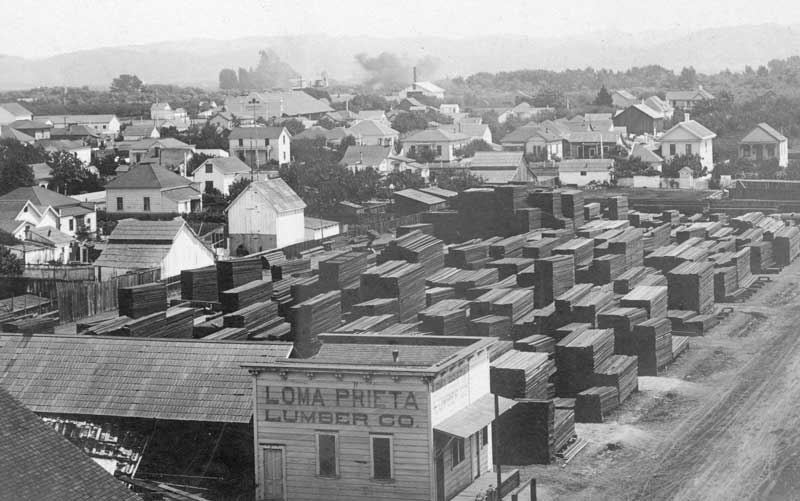
It was a moment of sheer luck that historian and author Derek R. Whaley, while doing research for his own book, discovered the work of the late Ronald G. Powell.
Whaley owns local publishing company Zayante Publishing and is the author of the Santa Cruz Trains series, which documents the rise and fall of the railroading industry in Santa Cruz County. He’d been having a difficult time finding history of the Loma Prieta Branch that ran from Aptos through the Forest of Nisene Marks. So, he reached out to UC Santa Cruz Librarian Emeritus Stanley D. Stevens, who sent over a large PDF containing one of Powell’s manuscripts.
“I was like, ‘What is this thing?’” Whaley said. “Powell was so incredibly thorough, so detailed. I was like, ‘This is crazy!’ And I immediately asked Stanley for more.”
“The Reign of the Lumber Barons” chronicles the golden age of the lumber industry in the hills above Aptos and Corralitos at the end of the 19th century. Through first-hand accounts, newspaper clippings, and more, the text examines how tens of thousands of old-growth trees were systematically harvested to use in the development of the Bay Area, starting in the 1860s.
Powell, a historian and author himself, was often found in the UCSC library in the 1980s and ‘90s, poring over maps and texts, compiling histories as he went. The manuscript was intended to be part of Powell’s history series about Martina Castro’s Rancho Soquel Augmentation, a Mexican land grant given in 1833 that covers present-day Santa Cruz County.
Whaley, who in 2014 had just moved to New Zealand to work on his PhD in Late Medieval French Chronicles, saw an opportunity to preserve Powell’s work and do research for his own book.
“What Powell wrote was a chronicle, which is what I’d been working on for the past four years for my thesis,” Whaley explained. “And here’s a guy who did it 30 years ago, about Santa Cruz history.”
Whaley published the first of Powell’s manuscripts as “The Tragedy of Martina Castro” last year, focused primarily on mid-county history. “The Reign of the Lumber Barons” uncovers stories of people living in the logging towns in places such as Loma Prieta and Valencia, pulling in history from Aptos, Corralitos and parts of Watsonville.

It also tells the story of how the region eventually became a part of the California State Park System. The Forest of Nisene Marks was named after the mother of a Salinas farm family who bought the land in the 1950s. Almost 9,700 acres was donated to the state in 1963 by Marks’ children.
“I hope [the book] helps people appreciate Nisene Marks more,” he said. “Its history is not well known… how it’s tied up with the logging industry. How most of the redwoods are second growth… people don’t realize that there’s almost no old growth. It was all logged.”
Whaley said he used techniques he learned as an academic historian to edit and publish Powell’s work, contextualizing the histories, writing introductions and footnotes. He said he wanted to give the stories more context and depth without undermining the original history.
“And Powell’s chronicles worked perfectly for that,” he said. “He wrote such a good history, with great sources, all in the public domain, meaning there’s no copyright issues. I asked his family’s permission… They were excited that his work would be seen by the public again, and be brought out of the shadows.”
“The Reign of the Lumber Barons” is currently available on Amazon, and should be at Bookshop Santa Cruz and other bookshops soon. A handful of copies have also been sent to Castro Adobe and other Friends of the State Parks stores.
Whaley said a third and final installment of the Rancho Soquel Augmentation series is in the works, and once completed, it should make for an interesting and cohesive set of books.
“Almost everything does come together in the end,” Whaley said. “Especially when all three books are done—you’re really going to see that these stories do intertwine a lot.”












